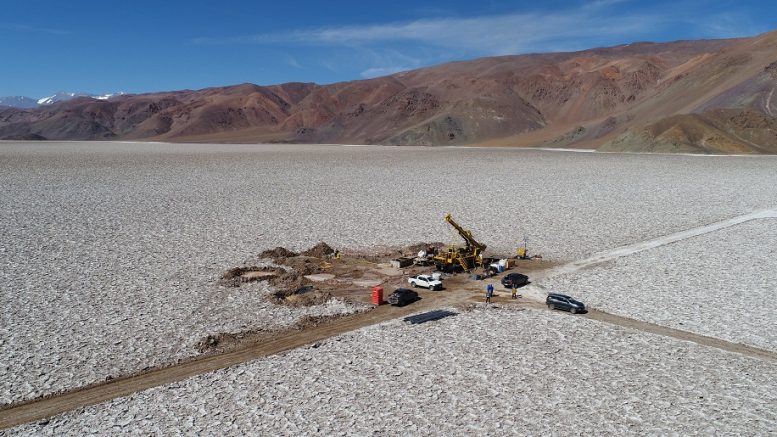Neo Lithium (TSXV: NLC) has produced battery grade lithium carbonate at its pilot plant in Fiambalá using concentrated brine from its wholly owned Tres Quebradas lithium project in Argentina.
The junior said the brine was extracted from the high-grade zone located in the northern area of Tres Quebradas and then evaporated at the company’s industrial-scale ponds at the same location.
No chemical reagents were added to the brine other than minor amounts of hydrochloric acid for pH control at the final stage of evaporation, the company said in a press release. The concentrated brine was then transported by truck to the pilot plant in the town of Fiambalá.
Neo Lithium said two processes were tested to produce battery-grade lithium carbonate.
The first process involves using a solvent extraction phase (SX-B) for boron removal, a sulfation phase for calcium removal using sodium sulfate, and a liming and carbonation phase to remove magnesium and any remaining calcium. The lithium carbonate process is then completed with three stages of soda ash carbonation, washing and drying.
As a result of this process, the company produced lithium carbonate with a purity of 99.535%.
The second technique to produce battery-grade lithium carbonate involves changing the sulfation phase for calcium removal by an acidification phase with sodium hydroxide. The remainder of the lithium carbonate process is then completed similar to the first process.
The result of the second process was lithium carbonate with a purity of 99.599%, which is higher than the first process.
Neo Lithium noted that the second process also requires less volume of additives for calcium removal, only 8,000 tonnes of sodium hydroxide versus 40,000 tonnes of sodium sulfate for the production of 20,000 tonnes a year of lithium carbonate.
“The price per tonne of sodium hydroxide is higher than the price per tonne of sodium sulfate; however, sodium hydroxide is sourced locally, and sodium sulfate is imported,” the company stated. “Transporting less volume carries decreasing transport and logistics costs. In addition, the second process consumes a fraction of the fresh water than the first process, making the new proposed process more environmentally conscious. Lastly, the second process is completed at room temperature, whereas the first process requires 60⁰ Celsius, implying a meaningful saving in energy consumption.”
Based on these results, Neo Lithium’s management believes that the second process would have significant advantages for commercial production.


Be the first to comment on "Neo Lithium produces battery grade lithium in Argentina"